Adam Summerville
Procedural Content Generation via Knowledge Transformation (PCG-KT)
May 01, 2023Abstract:We introduce the concept of Procedural Content Generation via Knowledge Transformation (PCG-KT), a new lens and framework for characterizing PCG methods and approaches in which content generation is enabled by the process of knowledge transformation -- transforming knowledge derived from one domain in order to apply it in another. Our work is motivated by a substantial number of recent PCG works that focus on generating novel content via repurposing derived knowledge. Such works have involved, for example, performing transfer learning on models trained on one game's content to adapt to another game's content, as well as recombining different generative distributions to blend the content of two or more games. Such approaches arose in part due to limitations in PCG via Machine Learning (PCGML) such as producing generative models for games lacking training data and generating content for entirely new games. In this paper, we categorize such approaches under this new lens of PCG-KT by offering a definition and framework for describing such methods and surveying existing works using this framework. Finally, we conclude by highlighting open problems and directions for future research in this area.
* 15 pages, 14 figures
Exploring Level Blending across Platformers via Paths and Affordances
Aug 22, 2020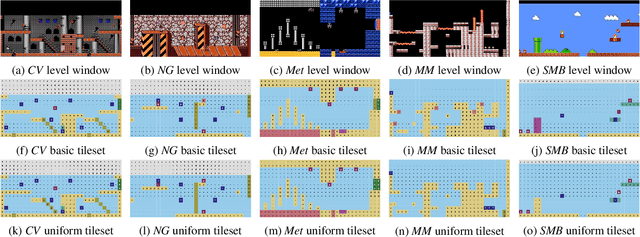
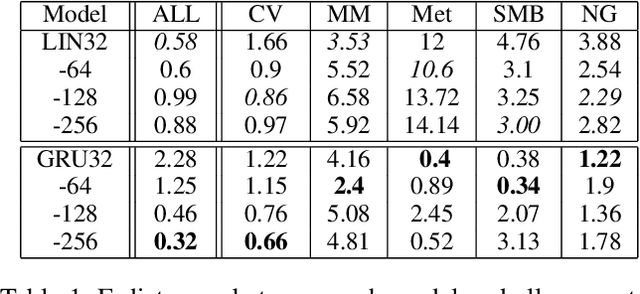


Abstract:Techniques for procedural content generation via machine learning (PCGML) have been shown to be useful for generating novel game content. While used primarily for producing new content in the style of the game domain used for training, recent works have increasingly started to explore methods for discovering and generating content in novel domains via techniques such as level blending and domain transfer. In this paper, we build on these works and introduce a new PCGML approach for producing novel game content spanning multiple domains. We use a new affordance and path vocabulary to encode data from six different platformer games and train variational autoencoders on this data, enabling us to capture the latent level space spanning all the domains and generate new content with varying proportions of the different domains.
Procedural Content Generation via Machine Learning (PCGML)
May 07, 2018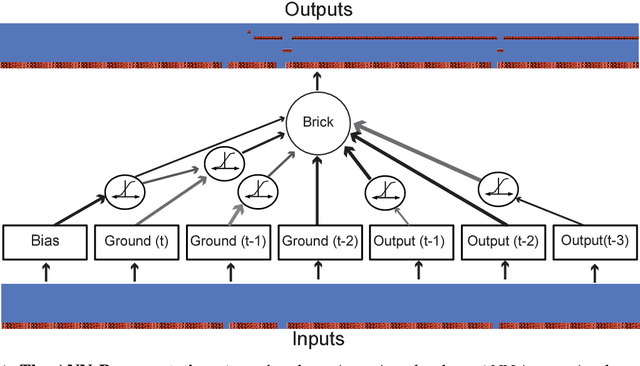

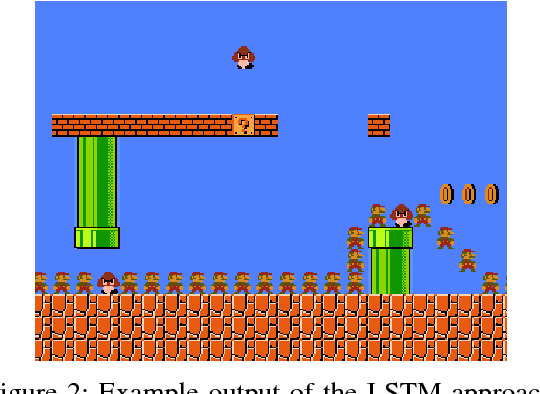
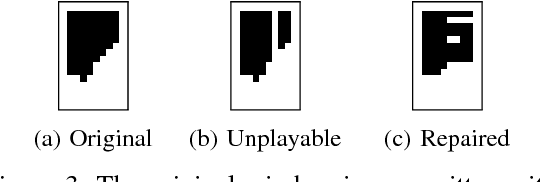
Abstract:This survey explores Procedural Content Generation via Machine Learning (PCGML), defined as the generation of game content using machine learning models trained on existing content. As the importance of PCG for game development increases, researchers explore new avenues for generating high-quality content with or without human involvement; this paper addresses the relatively new paradigm of using machine learning (in contrast with search-based, solver-based, and constructive methods). We focus on what is most often considered functional game content such as platformer levels, game maps, interactive fiction stories, and cards in collectible card games, as opposed to cosmetic content such as sprites and sound effects. In addition to using PCG for autonomous generation, co-creativity, mixed-initiative design, and compression, PCGML is suited for repair, critique, and content analysis because of its focus on modeling existing content. We discuss various data sources and representations that affect the resulting generated content. Multiple PCGML methods are covered, including neural networks, long short-term memory (LSTM) networks, autoencoders, and deep convolutional networks; Markov models, $n$-grams, and multi-dimensional Markov chains; clustering; and matrix factorization. Finally, we discuss open problems in the application of PCGML, including learning from small datasets, lack of training data, multi-layered learning, style-transfer, parameter tuning, and PCG as a game mechanic.
Automatic Mapping of NES Games with Mappy
Jul 12, 2017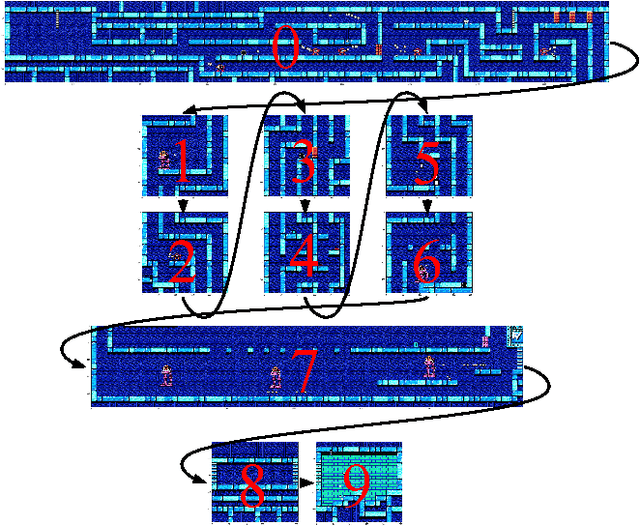
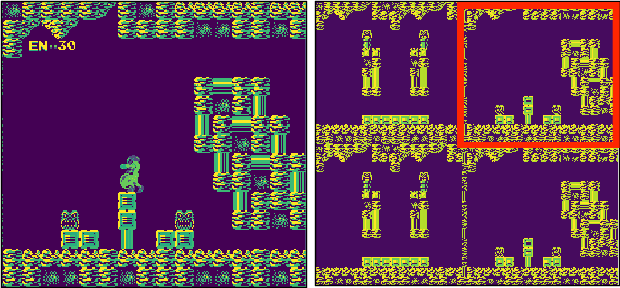
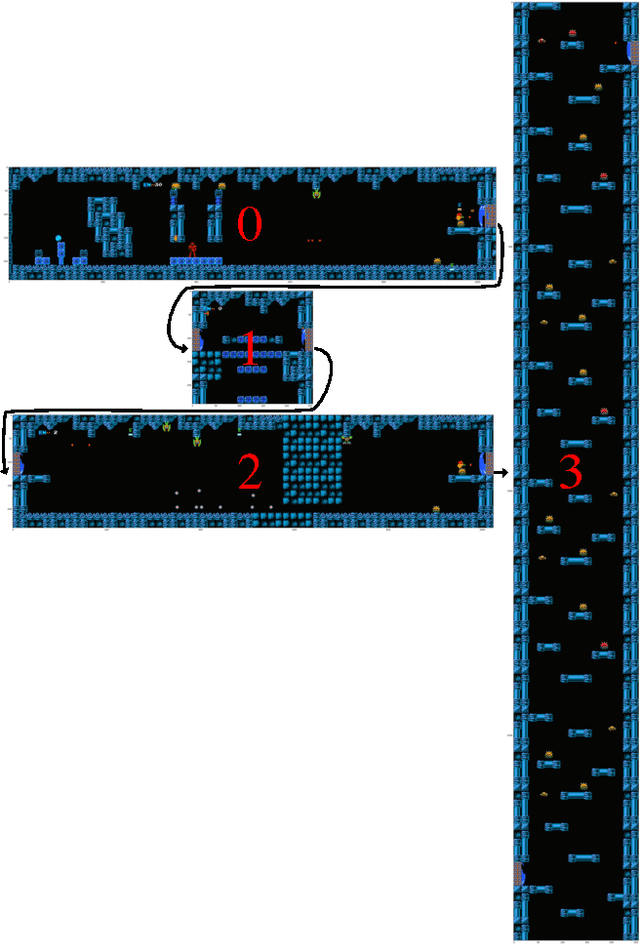

Abstract:Game maps are useful for human players, general-game-playing agents, and data-driven procedural content generation. These maps are generally made by hand-assembling manually-created screenshots of game levels. Besides being tedious and error-prone, this approach requires additional effort for each new game and level to be mapped. The results can still be hard for humans or computational systems to make use of, privileging visual appearance over semantic information. We describe a software system, Mappy, that produces a good approximation of a linked map of rooms given a Nintendo Entertainment System game program and a sequence of button inputs exploring its world. In addition to visual maps, Mappy outputs grids of tiles (and how they change over time), positions of non-tile objects, clusters of similar rooms that might in fact be the same room, and a set of links between these rooms. We believe this is a necessary step towards developing larger corpora of high-quality semantically-annotated maps for PCG via machine learning and other applications.
Mechanics Automatically Recognized via Interactive Observation: Jumping
Jul 12, 2017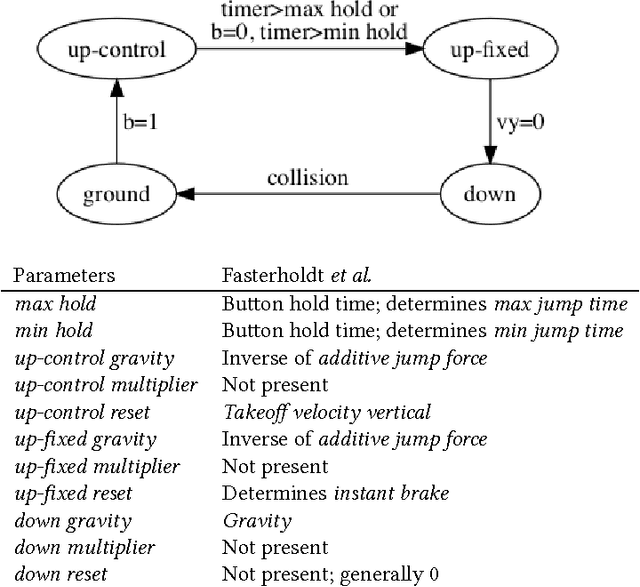
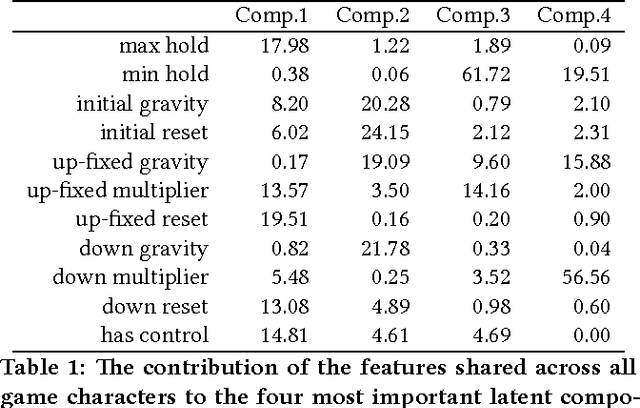
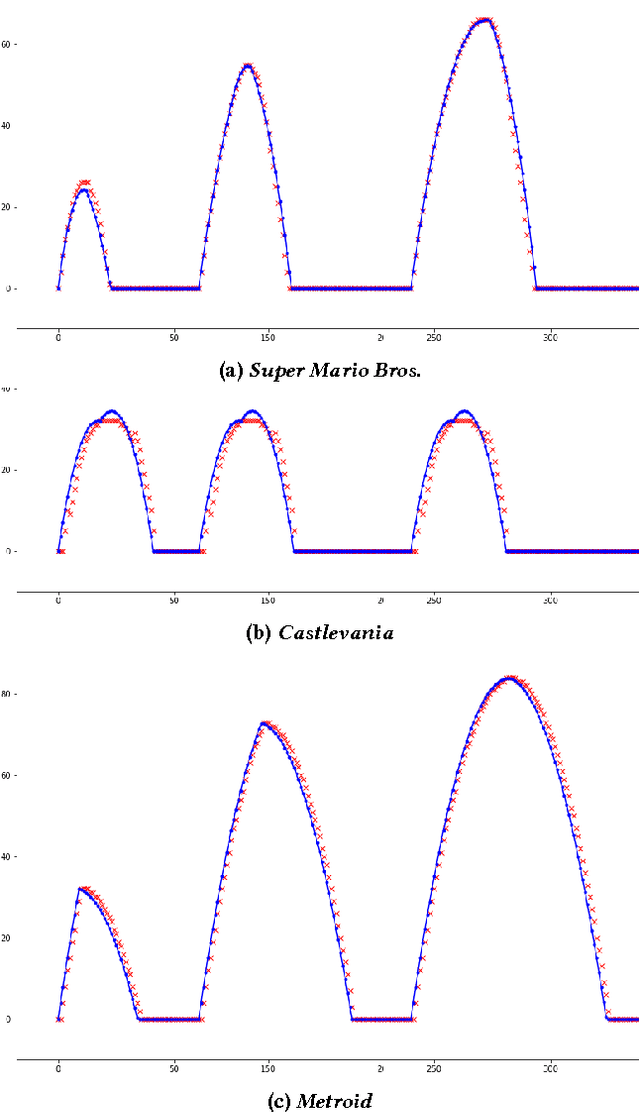
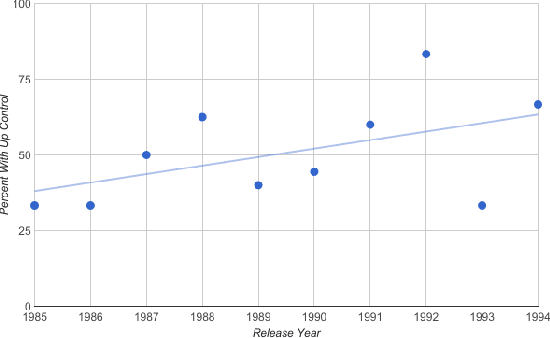
Abstract:Jumping has been an important mechanic since its introduction in Donkey Kong. It has taken a variety of forms and shown up in numerous games, with each jump having a different feel. In this paper, we use a modified Nintendo Entertainment System (NES) emulator to semi-automatically run experiments on a large subset (30%) of NES platform games. We use these experiments to build models of jumps from different developers, series, and games across the history of the console. We then examine these models to gain insights into different forms of jumping and their associated feel.
CHARDA: Causal Hybrid Automata Recovery via Dynamic Analysis
Jul 11, 2017
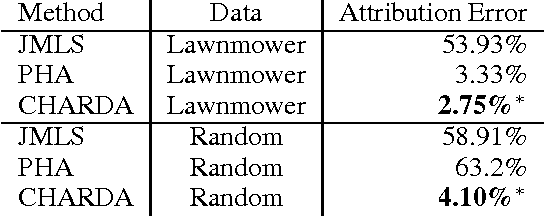

Abstract:We propose and evaluate a new technique for learning hybrid automata automatically by observing the runtime behavior of a dynamical system. Working from a sequence of continuous state values and predicates about the environment, CHARDA recovers the distinct dynamic modes, learns a model for each mode from a given set of templates, and postulates causal guard conditions which trigger transitions between modes. Our main contribution is the use of information-theoretic measures (1)~as a cost function for data segmentation and model selection to penalize over-fitting and (2)~to determine the likely causes of each transition. CHARDA is easily extended with different classes of model templates, fitting methods, or predicates. In our experiments on a complex videogame character, CHARDA successfully discovers a reasonable over-approximation of the character's true behaviors. Our results also compare favorably against recent work in automatically learning probabilistic timed automata in an aircraft domain: CHARDA exactly learns the modes of these simpler automata.
Automated Game Design Learning
Jul 11, 2017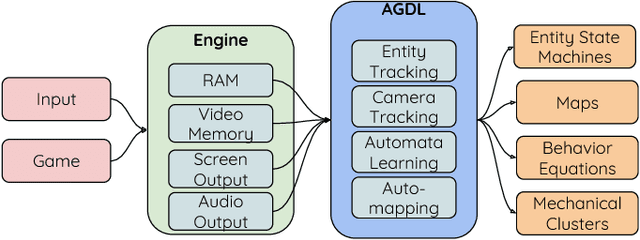
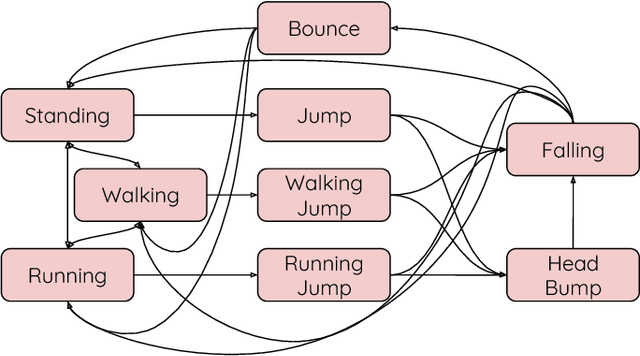
Abstract:While general game playing is an active field of research, the learning of game design has tended to be either a secondary goal of such research or it has been solely the domain of humans. We propose a field of research, Automated Game Design Learning (AGDL), with the direct purpose of learning game designs directly through interaction with games in the mode that most people experience games: via play. We detail existing work that touches the edges of this field, describe current successful projects in AGDL and the theoretical foundations that enable them, point to promising applications enabled by AGDL, and discuss next steps for this exciting area of study. The key moves of AGDL are to use game programs as the ultimate source of truth about their own design, and to make these design properties available to other systems and avenues of inquiry.
Off The Beaten Lane: AI Challenges In MOBAs Beyond Player Control
Jun 09, 2017


Abstract:MOBAs represent a huge segment of online gaming and are growing as both an eSport and a casual genre. The natural starting point for AI researchers interested in MOBAs is to develop an AI to play the game better than a human - but MOBAs have many more challenges besides adversarial AI. In this paper we introduce the reader to the wider context of MOBA culture, propose a range of challenges faced by the community today, and posit concrete AI projects that can be undertaken to begin solving them.
Super Mario as a String: Platformer Level Generation Via LSTMs
Mar 08, 2016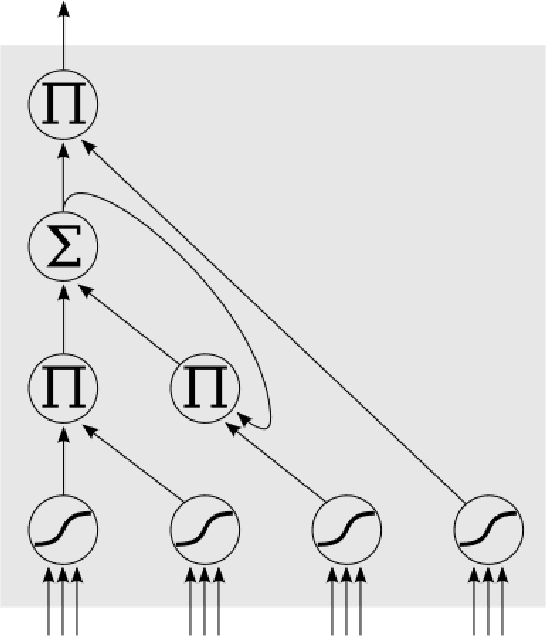
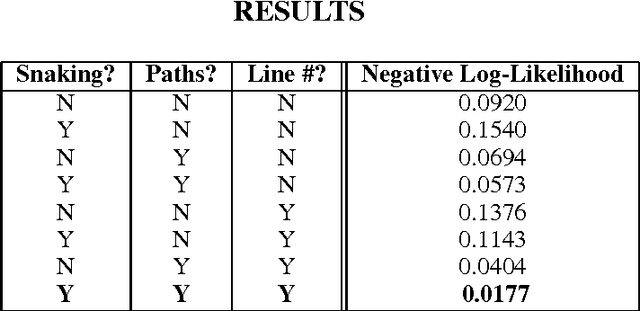
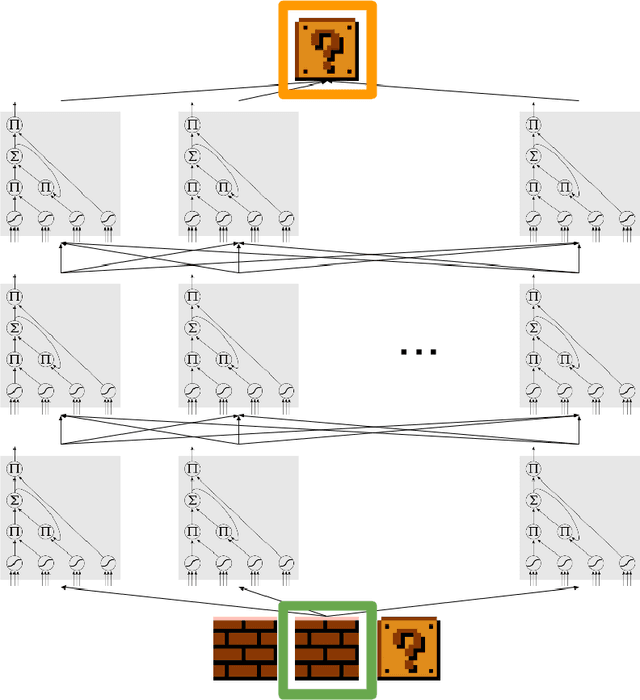

Abstract:The procedural generation of video game levels has existed for at least 30 years, but only recently have machine learning approaches been used to generate levels without specifying the rules for generation. A number of these have looked at platformer levels as a sequence of characters and performed generation using Markov chains. In this paper we examine the use of Long Short-Term Memory recurrent neural networks (LSTMs) for the purpose of generating levels trained from a corpus of Super Mario Brothers levels. We analyze a number of different data representations and how the generated levels fit into the space of human authored Super Mario Brothers levels.
 Add to Chrome
Add to Chrome Add to Firefox
Add to Firefox Add to Edge
Add to Edge